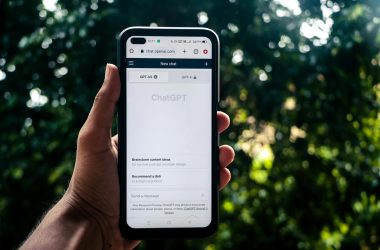I have repaired multiple water-damaged devices, including two computer monitors, a computer motherboard, and a touch screen smartphone. I haven’t failed to recover any of them, and the technology ranged from old to new, so you are very likely to succeed if you follow my instructions.
Disclaimer: I will not accept responsibility for any adverse consequences which you believe may have arisen from the use of these instructions. I have done my best to ensure that these instructions are safe.
The first thing you should do (if possible) is remove the water-damaged phone’s battery, then proceed to follow the instructions only in the order shown below (all immediately) after dismantling it.
Quickly Drain Excess Water Out Of The Phone
A waterlogged phone is going to take a very long time to dry if you don’t drain out the excess water. Lengthy drying times translates to extensive corrosion damage. Just allow the water to drip off for a few seconds and rotate it to help it flow out of the various crevices and nooks your phone may contain. Do not pat it dry with a cloth or anything else. Most absorbent materials can cause static damage.
Water-Damaged Phones Need To Be Dried As Soon As Possible: Some guides will advise you to set your phone aside for days to let it dry, as if you have all the time in the world. You don’t. With each passing moment, water is corroding the metals in your smartphone, and damaging the rest of the circuitry as well. My go-to solution is a blow dryer (just a conventional handheld hair dryer).
To Safely Restore A Water Damaged Phone, It Must Be As Dry As A Bone
I can’t stress the importance of this enough. Water-damaged phones must be as dry as a bone before trying to turn them on. This doesn’t mean that your phone is unrecoverable because you tried to turn it on (I have recovered phones which people repeatedly tried to turn on while they were wet). Strong airflow is very helpful. Set the blow dryer to the high fan setting with the heat on, and blast out the innards of the phone with hot air for a few seconds at a time.
Periodically touch the phone (not the circuitry) while blow drying it to see if it gets hot. Once it gets very warm: shut off the blow dryer and leave it for a few minutes, then repeat. This would be much easier if you had a blow dryer which could blow warm air, rather than hot air. If you have a continuous source of warm air, that would be perfect because you could continuously blow dry the device without overheating it.
I would recommend doing this a few times, and then placing it directly in front of a desk fan on the highest setting (leave the phone open). Leave it there for several hours, and then examine it carefully, and blow dry it a few more times using the procedure I recommended above. If you’d like, it is safer to leave the phone for an extra day after that. You may now turn it on. If the phone malfunctions after an extra day of drying, attempt to reload the operating system, as OS corruption may have occurred.
Drying A Water-Damaged Phone With Rice
This is one of the most highly recommended ways to recover a water damaged phone. It takes a fair amount of time, though. Open the phone just a little bit and lightly wrap it with mesh or something that allowed air to pass through (just ensure that nothing comes into contact with its circuitry). Completely submerge the phone in a container filled with plenty of rice for at least two days. Leaving the phone.
Rice acts as a desiccant — It dehydrates the surrounding air, which causes the air to become more absorbent. This will accelerate the vapourization of water from the phone.
Due to water damage, operating system corruption can occur. This may cause your phone to malfunction even after successful drying. After conducting the drying procedures above, running your phone’s desktop software and telling it to do a factory reset might do the trick (it worked for me!).




